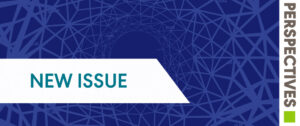Plunging Into the Federal Grant Pool
“Take the plunge, Cathy,” I kept telling myself. It was my 4th year as an assistant professor of speech-language pathology at the University of New Mexico (UNM), and I kept telling myself it was time to put a federal grant proposal together. I’d been working toward this goal for years and had taken the initial steps of securing several small grants through UNM and the American Speech-Language-Hearing Foundation, and I’d completed and published multiple research studies. Still, I hesitated. Despite taking various grant-writing workshops, I found the task daunting. I knew I needed to learn the unwritten rules and expectations of federal grant writing that are essential to success, but how could I gain access to this information? What I needed, I thought, was individualized and sustained support from successful grant writers in the communication sciences and disorders field.
Overview of CPRI
It seemed I had no sooner formed this thought when I learned of a new program sponsored by the American Speech-Language-Hearing Association (ASHA) called the Clinical Practice Research Institute (CPRI). The program had been specifically designed to assist new clinical researchers with securing federal funding, and one major component of the program was to invite clinical practice researchers who had secured federal grants to serve as mentors for newer researchers. What good fortune—this was exactly the kind of assistance I needed! I promptly applied for the program and was thrilled to be accepted into the inaugural year of CPRI.
CPRI: Phase I
CPRI consists of three phases and lasts approximately 1 year. In Phase I, all participants and mentors meet at the ASHA National Office for several days, and multiple large group, small group, and individual sessions are held, during which the participants’ proposed projects are discussed and developed. My own research focuses on teaching early linguistic rules to children who use augmentative and alternative communication (AAC), and I was fortunate enough to be assigned Marc Fey as my mentor. Although I’d had wonderful AAC mentors, my work required refining from a child language perspective. I benefited greatly from the insights and perspectives of all of the child language researchers, including not only Marc Fey but also Melanie Schuele and Steve Camarata. These researchers helped me to refine my methodology and frame research questions that would be more compelling to non-AAC reviewers.
CPRI: Phase II
During Phase II, participants continue to work on their grant proposals while receiving ongoing distance mentoring as needed from their primary mentor. In my case, I revised my proposal based on the feedback I had received during Phase I, and my mentor graciously tolerated my lengthy e-mails and provided extensive comments on proposal drafts. I worked to refine the theoretical focus of my proposal as well as to revamp the methodology to better reflect the current state of the art in both AAC and child language, with the ongoing support of my mentor.
CPRI: Phase III
At the end of the CPRI year, all mentors and participants recongregate at the ASHA National Office so that the protégés can receive further input from both their personal mentors and the CPRI faculty at large. The overarching goal is for participants to finalize plans for submitting their proposals. Our CPRI cohort was broken into two smaller groups: child-focused and adult-focused. Before the meeting, everyone read the proposals from their group. At the meeting, the two groups met and provided/received feedback on each proposal, which allowed everyone to benefit from the suggestions. I also benefited greatly from individual follow-up meetings to clarify the feedback I had received. For example, in addition to Marc Fey’s suggestions, I received assistance with refining my single-case design methodology from Kevin Kearns and on developing my linguistic probes from Christine Dollaghan. The final activity was equally beneficial: In a large group setting, participants displayed their specific aims and received suggestions for improvement. It was during this activity that my own aims were finally solidified.
The End Result
As a direct result of my participation in CPRI, the first grant proposal I submitted to the National Institute on Deafness and Other Communication Disorders in June 2010 was scored. Although I received a relatively high score of 46 ( lower is better, with 10 being best; range = 10–90), this was a substantial accomplishment, as only half of the submissions are scored. Following my February 2011 resubmission, I received a score of 18, and I am thrilled to report that my proposal has been funded. There is no doubt that I never would have achieved this success without CPRI, and I owe a huge debt of gratitude to everyone involved with the program, particularly ASHA’s Chief Staff Officer for Science and Research, Margaret Rogers. The lessons I learned will assist me in all of my future grant proposal–writing endeavors, and I encourage all new communication sciences and disorders researchers committed to learning how to secure federal funding to apply to this unique institute.










